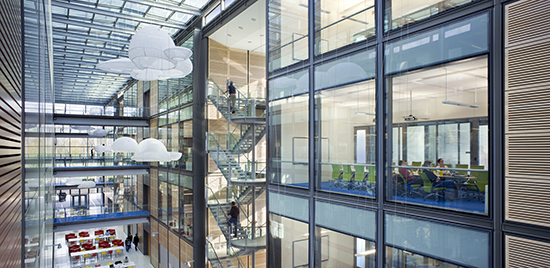
This is the second post in a series considering the role of psychological research within the context of an architectural practice. The goal of this series is to provide answers to six key questions, namely, the why, what, who, when, how and where, of design focused psychological research.
In this post we’ll look at the “why” of psychological research and ask why this type of research should matter to building owners and users.
It is important to acknowledge that not all architects are of the opinion that psychological research is necessary, and some consider it rather burdensome given the various other issues that require attention in an architectural practice. It is therefore understandable that not all architects will engage in it. There is, however, a growing number of architects who believe that social and psychological research will play an increasingly important role in the future of architectural practice, not by replacing intuition and experience in the design process, but rather by supporting it. The basis for this belief is the assumption that it is in the best interest of architects, clients and building users to better understand the psychological and social dimensions of the designed environment and how design decisions influence human well-being and performance. Although it is beyond the scope of this post to address all the applications and nuances of this field of research, a brief definition of psychosocial research as it relates to architectural practice will be provided and reference will be made to a number of areas in which this research has proven to be beneficial.
For the purposes of this discussion, designed focused psychosocial research, within the context of architectural practice, will broadly be defined as an ‘intentional and systematic process through which an attempt is made to determine and/or describe the influence of designed spaces on human functioning and performance.’
With the majority of designed spaces being occupied by people, it can be assumed that a key indicator of the success of a design depends on how the space influences the human activities within that space. Since the early 1900’s, researchers from various fields have attempted to study these influences. Although these efforts did not always produce findings of specific interest to designers, a number of research areas emerged as having direct bearing on design practice:
Workplace design: The effect of the designed environment on worker productivity has historically been a popular topic of study. Since the early 1900’s different fields of inquiry regarding workplace performance have emerged. Today organizational psychologists and interior and industrial designers utilize human factors and ergonomics research to inform their work and help define the relationship between the physical work space, productivity and the organizational culture. The pursuit of “collaboration” and “innovation” in the work environment has, especially in recent years, stimulated research in this field.
Learning environments: The effect of the physical environment on teaching and learning is a source of ongoing study and regular discussion. Studies focus on a wide range of physical aspects, ranging from classroom colors to furniture layout and design. Given changing pedagogies, and recent developments aimed at the digitization of teaching spaces, the psychosocial effect of designed environments on learning is undoubtedly a relevant and important topic.
Healthcare facilities: One of the most significant avenues of design focused psychosocial research addresses the effect of the physical environment on health and recovery. Although this is not a new field of research it has experienced significant growth in recent years and serves as the primary driver for many programs in evidence based design (EBD). The Center for Health Design, with the Evidence Based Design Accreditation and Certification (EDAC) program is one example. Given recent developments in healthcare policy and the anticipated impact of changing demographics on the healthcare industry, this type of research, which addresses patient and caregiver well-being, remains crucial.
Residential environments: Little doubt exists regarding the importance of the residential environment in supporting an individual’s social development and psychological well-being. This is especially true in specialized housing environments such as those found in campus communities or long term care environments where the boundary between private and public space is reduced and the physical environment directly impacts social interaction. Appropriate design decisions, considering the psychological and social opportunities of these environments, have the potential to positively impact the users of these spaces.
Retail environments: Although recognized less as a traditional field of research for architects, the psychology of consumer behavior and the effect of the designed environment on this behavior remains a compelling field of research with definite applications.
Findings in the above mentioned areas of research hold the potential to impact the welfare and performance of building occupants. Design focused psychosocial research can benefit building owners and occupants in distinct ways by helping owners identifying specific shortcomings and opportunities for improved building performance. It can also help owners and occupants better understand the impact of design decisions on user performance and organizational culture and increase occupants’ awareness of their own actions and preferences in regards to specific settings.
While the potential benefits of psychosocial research for building owners and users are well documented, the benefits this type of research holds for architects are not as clear. The next post in this series will discuss a number of specific benefits design focused psychosocial research holds for architects.
Related:
An Introduction to Psychological Research in Architectural Practice


